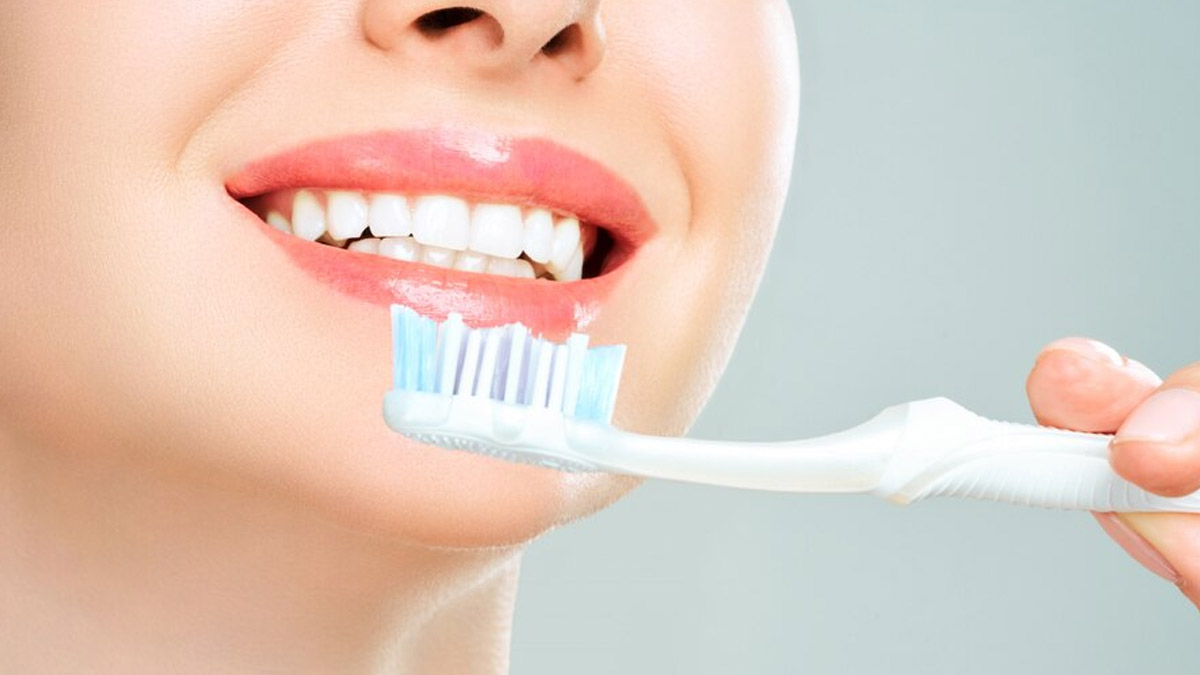
The digestive tract is often conceived of as a long, unidirectional tube, yet the process of nutrient assimilation is far from a simple assembly line; it is an intricately orchestrated cascade that begins immediately upon the introduction of food to the mouth. The state of one’s oral health—the health of the teeth, gums, and oral microbiome—is not a separate, cosmetic concern but the absolute foundational stage upon which the rest of digestion is built. When the mouth’s delicate ecosystem is compromised by dental disease or structural issues, the entire efficiency of the downstream digestive process, from enzymatic action to nutrient absorption and even gut microbiome balance, is immediately jeopardized. The mouth acts as the gatekeeper and initial processing unit, and a flaw at this early stage often creates compounded problems that echo throughout the gastrointestinal (GI) system, making the connection between a healthy smile and a healthy gut undeniable.
The Mechanistic Flaw: When Chewing Efficiency Breaks Down
The most immediate and fundamental link between the two systems is the mechanical process of mastication, or chewing. Teeth are designed to fracture complex food matrices into smaller, manageable particles. This reduction in particle size dramatically increases the total surface area of the food bolus, allowing digestive enzymes in the stomach and small intestine to act more quickly and completely. When an individual suffers from tooth loss, severe dental pain, or advanced periodontal disease, the chewing efficiency is critically impaired.
…the chewing efficiency is critically impaired.
This forces the ingestion of larger, poorly broken-down food chunks, which overwhelms the stomach’s capacity for timely processing and puts an undue strain on the entire GI tract. Incomplete mechanical breakdown in the mouth translates directly into incomplete chemical digestion further down, which can lead to malabsorption, nutrient deficiencies, and symptoms such as bloating and gas. A reliance on soft, easily-chewed foods also often leads to an imbalanced diet, compounding the nutritional deficit that started with the physical inability to properly process tougher, nutrient-dense foods like raw vegetables or certain proteins.
The Salivary Secretion: Igniting the Chemical Breakdown
Beyond the physical act of chewing, saliva assumes a critical, often underestimated, role in initiating chemical digestion. Saliva is not merely a lubricant; it is a complex fluid containing key enzymes, primarily salivary amylase (ptyalin), which begins the breakdown of complex carbohydrates (starches) while the food is still in the mouth. It also contains salivary lipase, which initiates the digestion of fats.
Saliva is not merely a lubricant; it is a complex fluid containing key enzymes…
Any condition that compromises the volume or quality of saliva—such as xerostomia (dry mouth) caused by certain medications, systemic diseases like Sjögren’s syndrome, or dehydration—directly handicaps this initial enzymatic stage. Reduced salivary flow not only impairs the breakdown of starches but also affects the formation of a lubricated bolus, making swallowing difficult. This deficiency forces the stomach to receive food that has not been properly primed, slowing gastric emptying and contributing to feelings of fullness and digestive discomfort. A robust salivary flow is thus a prerequisite for seamless carbohydrate metabolism.
The Microbiome Bridge: Oral Pathogens as Gut Invaders
Perhaps the most contemporary and complex connection lies in the microbiome bridge between the oral cavity and the gut. The mouth hosts a diverse community of bacteria, and while many are benign or beneficial, poor oral hygiene, advanced periodontitis (gum disease), and rampant dental decay allow specific, highly pathogenic bacteria to proliferate. These oral pathogens, which thrive on chronic inflammation, are inevitably swallowed with saliva and food.
…poor oral hygiene, advanced periodontitis (gum disease), and rampant dental decay allow specific, highly pathogenic bacteria to proliferate.
Once these aggressive bacteria reach the lower GI tract, they can actively disrupt the delicate balance of the gut microbiome, displacing beneficial species and contributing to chronic inflammation, which has been linked to conditions such as Inflammatory Bowel Disease (IBD) and Irritable Bowel Syndrome (IBS). Furthermore, the chronic inflammatory state caused by periodontitis allows inflammatory mediators to enter the bloodstream from the gums, circulating throughout the body and contributing to systemic inflammation that can worsen gastrointestinal symptoms. Maintaining a healthy oral microbiome is therefore a direct form of upstream gut protection.
Esophageal Consequences: Reflux, Erosion, and Disease Patterns
The health of the mouth can also reflect or actively contribute to conditions affecting the esophagus, the muscular tube connecting the mouth to the stomach. One of the clearest examples is Gastroesophageal Reflux Disease (GERD). Frequent episodes of acid reflux cause stomach contents to back up, bringing highly acidic material into the oral cavity. This acid repeatedly bathes the teeth, leading to dental erosion—a characteristic pattern of smooth, scooped-out tooth surfaces, often on the lingual (tongue side) surfaces.
This acid repeatedly bathes the teeth, leading to dental erosion—a characteristic pattern of smooth, scooped-out tooth surfaces…
Conversely, some oral issues can exacerbate esophageal distress. Missing or painful teeth might cause an individual to swallow air excessively (aerophagia) or to gulp down food rapidly, both of which can increase pressure in the stomach and trigger reflux episodes. Therefore, the dentist is often the first health professional to spot the unmistakable signs of long-standing, undiagnosed GERD, using the state of the tooth enamel as a direct, visible biomarker of chronic esophageal dysfunction. The dental findings serve as an early-warning signal for GI pathology.
Systemic Inflammation: The Gut-Oral Immunological Axis
The relationship between the mouth and gut is not purely mechanical or microbial; it is fundamentally immunological. Periodontal disease is a state of chronic, low-grade infection and inflammation. This inflammation generates a continuous stream of pro-inflammatory cytokines that enter the systemic circulation. This systemic inflammatory burden can exacerbate the inflammatory processes driving IBD, as the two conditions share similar immunological pathways.
This systemic inflammatory burden can exacerbate the inflammatory processes driving IBD…
Furthermore, the oral cavity is highly susceptible to manifestations of systemic gut diseases. For example, patients with Crohn’s disease, a type of IBD, frequently develop oral lesions, swelling, or chronic canker sores that are a direct reflection of their underlying inflammatory gut condition. The body treats the oral mucosa and the gut lining as parts of a unified immunological tract, meaning that a flare-up in the GI system often results in synchronous inflammatory activity in the mouth. Treating the oral inflammation in these cases, therefore, becomes an integral part of managing the patient’s overall chronic systemic condition.
Nutrient Deficiencies: When Malabsorption Affects the Mucosa
While oral health often affects digestion, the flow of influence also runs in the reverse direction: digestive disorders that cause malabsorption can manifest directly in the oral cavity. Conditions such as Celiac disease, Crohn’s disease, and chronic pancreatitis can impair the body’s ability to absorb essential vitamins and minerals, particularly iron, B vitamins (B12, folate), and Vitamin D.
…digestive disorders that cause malabsorption can manifest directly in the oral cavity.
These deficiencies are critical for the rapid turnover of oral mucosal cells and the health of the tongue and gums. A patient suffering from undiagnosed malabsorption might present with recurrent aphthous ulcers (canker sores), glossitis (tongue inflammation), angular cheilitis (cracks at the corners of the mouth), or an overall pale and fragile oral mucosa. In these instances, the mouth becomes a sentinel organ, displaying visible signs of the nutritional crisis that is rooted in the compromised absorptive capacity of the small intestine, guiding the clinician towards GI investigation.
Pharmacological Impact: Medications That Bridge the Gap
The pharmaceutical agents used to treat gastrointestinal conditions can also have profound, and sometimes detrimental, effects on oral health, highlighting the close connection. For instance, many medications used to reduce stomach acid, such as proton pump inhibitors (PPIs), can sometimes cause dry mouth (xerostomia) as a side effect. As previously established, reduced saliva flow increases the risk of tooth decay and gum disease, creating a paradoxical scenario where the treatment for a gut issue inadvertently harms the mouth.
…where the treatment for a gut issue inadvertently harms the mouth.
Conversely, the chronic use of corticosteroids often necessary for IBD management can increase susceptibility to oral candidiasis (thrush). The medical management of one system requires careful consideration of its collateral damage to the other. Clinicians must acknowledge this pharmacological interplay, emphasizing preventative oral care to patients initiating long-term GI treatments to mitigate these foreseeable and detrimental side effects, ensuring the solution for one problem does not become the cause of the next.
Behavioral Feedback Loops: Diet and Distress
The interconnectedness is also influenced by behavioral feedback loops centered around diet and comfort. An individual experiencing persistent GI distress, such as chronic heartburn or bloating, may unconsciously alter their diet, often favoring processed, easily digestible carbohydrates and soft, acidic beverages over tougher, more nutrient-rich foods. This dietary shift—high in fermentable sugars and acids—directly fuels the bacteria responsible for dental caries and acid erosion in the mouth.
This dietary shift—high in fermentable sugars and acids—directly fuels the bacteria responsible for dental caries and acid erosion in the mouth.
The resulting oral health deterioration then further exacerbates the initial GI problems by impairing chewing, creating a self-perpetuating, vicious cycle of systemic decline. Breaking this loop requires simultaneous intervention in both domains: addressing the underlying GI condition while providing rigorous dental restoration and focused nutritional counseling to encourage the reintroduction of a balanced, low-sugar, high-fiber diet that benefits both the teeth and the intestinal flora.
The Mandate for Integration: A Holistic View of Wellness
The consistent and bidirectional nature of the evidence demands that healthcare move beyond the historical silo approach, where the dentist focuses solely on the mouth and the gastroenterologist focuses only on the intestines. A holistic view of wellness must acknowledge the alimentary canal as a continuous, functional unit. The optimal management of any chronic condition that manifests in one part of the GI tract—be it periodontal disease or IBD—requires at least a diagnostic awareness, and often a collaborative treatment approach, involving the other.
The optimal management of any chronic condition that manifests in one part of the GI tract…
The future of healthcare, particularly for autoimmune and inflammatory diseases, increasingly points toward the integration of oral health screening into standard primary care and gastroenterological assessments. Recognizing the mouth as a mirror of systemic health and the starting point of digestion allows for earlier intervention, better risk stratification, and ultimately, more effective long-term disease management, validating the enduring notion that true health starts in the mouth.
